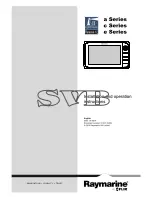
Adjusting the Rear Roller
1.
Adjust the rear roller brackets (
) to the
desired height-of-cut range by positioning the
required amount of spacers below the side plate
mounting flange (
) per the height-of-cut
chart; refer to
Height-of-Cut Chart (page 12)
.
g003324
Figure 11
1.
Spacer
3.
Side plate mounting flange
2.
Roller bracket
2.
Raise the rear of cutting unit and place a block
under the bedknife.
3.
Remove the 2 nuts securing each roller bracket
and the spacer to each side plate mounting
flange.
4.
Lower the roller and the screws from the side
plate mounting flanges and spacers.
5.
Place the spacers onto the screws on the roller
brackets.
6.
Secure the roller bracket and the spacers to
underside of the side plate mounting flanges
with the nuts previously removed.
7.
Verify that the bedknife to reel contact is correct.
Tip the cutting unit to expose front and rear
rollers and the bedknife.
Note:
The position of the rear roller to the reel
is controlled by the machining tolerances of the
assembled components, and so paralleling is
not required. A limited amount of adjustment is
possible by setting the cutting unit on a surface
plate and loosening the side plate mounting cap
screws (
). Adjust and tighten the cap
screws. Torque the cap screws to 27 to 36 N∙m
(240 to 320 ft-lb).
g020552
Figure 12
1.
Side plate mounting cap screws
Adjusting the Rear Spacers
The number of rear spacers determines the
aggressiveness of cut for the cutting unit. For a given
height of cut, adding spacers, below the side plate
mounting flange, increases the aggressiveness of the
cutting unit. All cutting units on a given machine must
be set to the same aggressiveness of cut (Number
of rear spacers, Part No. 106-3925); otherwise, the
after-cut appearance could be negatively affected
(
).
Positioning the Chain Links
The location at which the lift arm chain is attached
determines the rear roller pitch angle (
).
g006503
Figure 13
1.
Lift chain
3.
Bottom hole
2.
U-backet
10










































